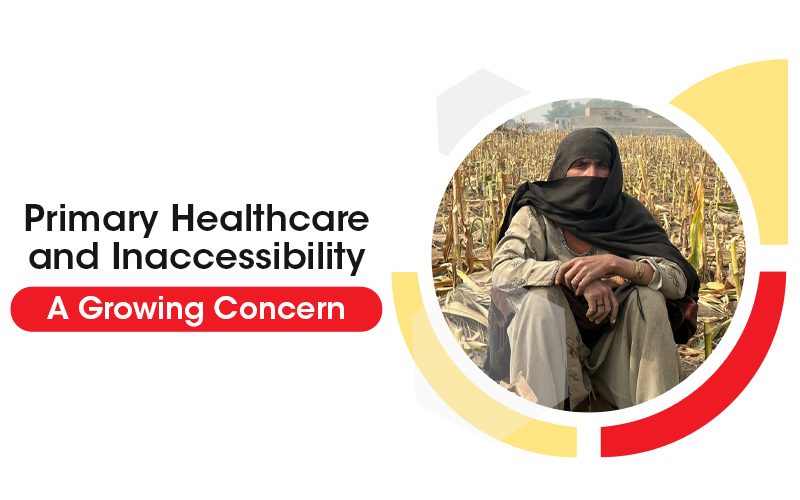Pakistan, the fifth most populous country in the world, is facing a daunting challenge in the form of inaccessible primary healthcare. Despite being essential for preventing and managing diseases, primary healthcare remains out of reach for millions of Pakistanis. Let’s discuss the reasons why.
Geographical Barriers: A Hurdle to Access
Pakistan’s diverse geography, ranging from mountains to deserts, poses a significant challenge to accessing primary healthcare. Many rural areas lack basic infrastructure, such as roads and transportation, making it difficult for people to reach healthcare facilities. Even when facilities are available, they often lack the necessary equipment, staff, and resources to provide quality care.
Financial Constraints: A Major Obstacle
For many Pakistanis, accessing primary healthcare is a luxury they cannot afford. Out-of-pocket expenses for healthcare are high, and many families struggle to make ends meet. The lack of health insurance and social security programs exacerbates this issue, leaving millions without access to essential healthcare services.
Inadequate Healthcare Infrastructure: A Weak Foundation
Pakistan’s healthcare infrastructure is inadequate to meet the needs of its growing population. Many healthcare facilities lack basic equipment, such as ultrasound machines and ventilators, and are often poorly maintained. This inadequate infrastructure hinders the delivery of quality healthcare services, further exacerbating the inaccessibility of primary healthcare.
Socio-Cultural Barriers: A Hidden Hurdle
Socio-cultural barriers, such as gender inequality and lack of education, also contribute to the inaccessibility of primary healthcare in Pakistan. Women, in particular, face significant barriers in accessing healthcare services due to cultural and social norms. Similarly, lack of education and awareness about healthcare services and diseases hinders people’s ability to seek timely medical care.
The Alarming Rise of Communicable Diseases
According to the World Health Organisation (WHO), Pakistan has one of the highest rates of infectious diseases in the region. Malaria, for instance, affects over 2 million people annually. Hepatitis, another highly infectious disease, has a nationwide prevalence of 4.8%, with Pakistan having the second-largest burden of hepatitis C globally.
The country tends to be at a high risk of epidemics due to communicable diseases, because of overcrowded cities, unsafe drinking water, inadequate sanitation, poor socioeconomic conditions, low health awareness, and inadequate vaccination coverage. Many of these diseases can be prevented by timely vaccinations and creating clean environments.
Pakistan’s Healthcare Infrastructure: IHHN’s impact
Pakistan’s healthcare infrastructure struggles to meet the needs of its rapidly growing population, due to a shortage of healthcare facilities, medical professionals, and equipment. As such, Indus Hospital & Health Network has spread across Pakistan through its Primary Care Programme, to provide integrated health delivery and improved access to all.
Launched in 2017, the Primary Care Programme (PCP) of IHHN exemplifies a transformative approach to healthcare in Pakistan. The program emphasises holistic care, integrating preventive healthcare, health education, and community engagement to empower individuals and foster a proactive approach to their well-being. By combining family medicine, public health initiatives, and acute care services, PCP is instrumental in building a healthier and more equitable society.
This programme has successfully operated TB mobile vans, Community Health Centres, and Pakistan’s first-ever Boat Clinic. With 81 primary clinic sites, IHHN is confident in its ability to reach the furthest areas in Pakistan. It is essential that we work towards strengthening Pakistan’s healthcare infrastructure, requiring a multi-faceted approach, involving healthcare providers and communities. Together, we can reduce the burden of preventable diseases and improve the health and well-being of communities.



